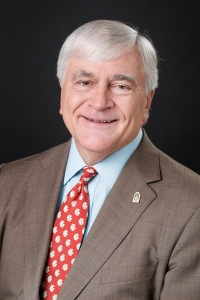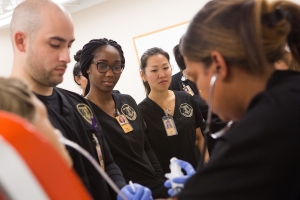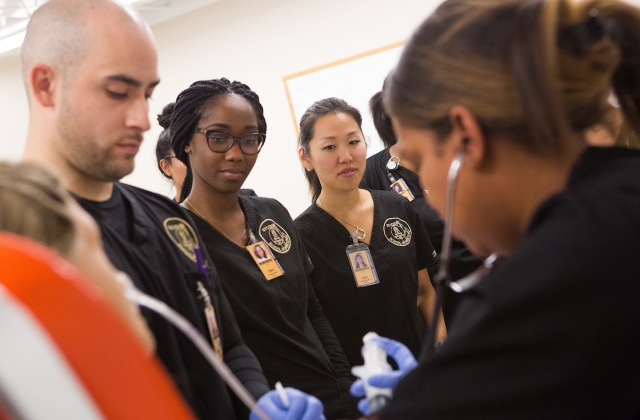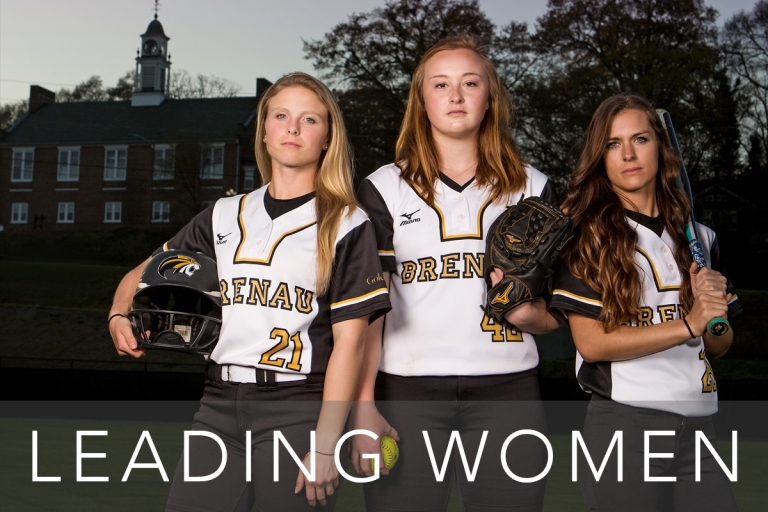Change through Strength, Leadership and Prestige
 Probably the only encounter most of you have had with that Victorian and early Edwardian era torture device, the cinched corset, has been in watching the opening scenes of Gone with the Wind or season one of Downton Abbey. Certainly pre-World War I Brenau women knew what they were. I suspect that Brenau women, too, were “early un-adapters.”
Probably the only encounter most of you have had with that Victorian and early Edwardian era torture device, the cinched corset, has been in watching the opening scenes of Gone with the Wind or season one of Downton Abbey. Certainly pre-World War I Brenau women knew what they were. I suspect that Brenau women, too, were “early un-adapters.”
What is the connection between corsets and modern Brenau? I’m glad you asked!
Ten years ago we moved into Brenau East, about a mile and a half from the Gainesville historic campus. There we built the professional schools of nursing and occupational therapy, some dance studios and other modern facilities within the walls of what once was the Michigan-born Warren Featherbone Co. Also dating back to the 19th century, the textile manufacturing enterprise used turkey quills, or “featherbones,” as the principal support feature in its signature product – corsets.
There is irony, you must admit, in the fact that 21st century Brenau women engage in top-level professional preparation study at the former factory for an enterprise that began as a corset factory. Women in the facility today wear distinctive nursing school scrubs as they learn practitioner/patient interaction in the human simulator lab – Brenau was one of the first nursing schools in the country to have its own. The scrubs and casual polo-style shirts set apart the occupational therapy students who are part of one of the first schools in North America to set the bar for an OT degree at the master’s level. There is a markedly different uniform – tights and leotards – for dance students, but no difference in the fact that their program has always led, too. Brenau’s dance degree program was one of the first in Georgia to receive national dance school accreditation.
Brenau has led the way in professional education for women since its founding in 1878. The Civil War had so diminished the male population in the South that women were called on to fill the many vacant professional positions. The institution we know as Brenau began as the Georgia Baptist Female Seminary – ostensibly a professional school for church professionals. The only problem with this progressive vision was that Southern churches almost universally excluded women from leadership roles.
The institution almost immediately began the evolutionary process of continuously re-inventing itself through the next 140 years – seminary, classical liberal arts college and conservatory, and liberal arts-focused doctoral university. Despite the societal and cultural pigeonholes that dictated otherwise, Brenau women learned to lead, in and out of professional settings, by exercising their creative and intellectual individualism, honed at Brenau, in many, many ways.
Here is another irony: The student population for the three areas I mentioned is about 93 percent women; however, the three programs are all actually coeducational. That includes the two health science programs in nursing and occupational therapy as well as dance, the more traditional Women’s College fare.

(AJ Reynolds/Brenau University)
Men have shared classrooms with Women’s College students at least since the early 1970s when Brenau acquired a coeducational undergraduate nursing school and when we created the alliance that enabled men to finish at Brenau the four-year theater degrees they had started at two-year Gainesville State College. With those and other programs today, there are currently about 50 men among the 840 students attending daytime classes in Gainesville. We project that of the 3,500 students we expect to enroll in all Brenau programs in 2017-18, about 25 percent will be male.
However, it is not all about men. Brenau has evolved into arguably one of the most culturally and ethnically diverse private schools in the South, with a student body that comprises a wide distribution of traditional-aged, nontraditional-aged, racially diverse and internationally inclusive learners. As I pointed out in a previous column, in the current academic year we adopted the university-wide theme of “Conversation not Confrontation,” and it is not hype. We mean it. We practice it.
I believe that Brenau Women’s College will continue to lead in discovering and building new educational models as we did in the 1990s as one of the leaders in the use of internet and digital technology to deliver Brenau’s high-quality education to the widest possible audience. We will always respect our heritage while we embrace the boundless and realistic opportunities defined by the demographics and demands of 21st century students. One branding consultant recently defined us – again with a dollop of irony – as “forward-looking traditionalists.”
As one who sees Brenau as part of the “Ivy League of the South,” I think forward-looking traditionalists perfectly describes an institution that builds on generations of prestige and embraces change from a position of strength and leadership rather than from necessity. Brenau will continue to exercise its most impactful leadership in redefining for tomorrow the roles and responsibilities for higher education. Neither metaphorically nor symbolically will that leadership involve corsets of any kind.
Ed L. Schrader, Ph.D.
eschrader@brenau.edu


